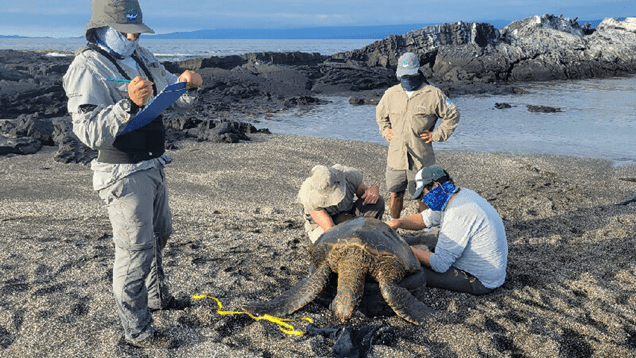Why should we protect and recognise natural areas?
Protected and conserved areas are much more than simple green spaces. They are true jewels of nature, which harbour an incomparable biological and cultural richness. They are home to thousands of species, many of them unique and threatened. They are the livelihood of millions of people, who benefit from the services they provide, such as water, air and climate. And they are also a natural solution to face the climate crisis, as they capture and store large amounts of carbon.
But these areas are not exempt from dangers. Deforestation, illegal mining, climate change, armed conflicts, among other factors, put them at constant risk. And if we do not act soon, we could lose these natural treasures forever and with them life on the planet…
That is why it is urgent that governments and civil society commit to strengthening the management and governance of these areas, not only to meet the global goal of conserving 30% of the territory by 2030, but also to ensure the sustainable development of their populations and human health.
 Photo: Galápagos NP (Ecuador)
Photo: Galápagos NP (Ecuador)
One way to do this is through the IUCN Green List Standard for Protected and Conserved Areas, a global standard that recognises protected and conserved areas that meet the criteria of management effectiveness, equity and governance. That is, natural spaces that are managed efficiently, fairly and in a participatory manner, ensuring the conservation of ecosystems and environmental services they provide, as well as respect for the rights and needs of local and Indigenous communities.
Currently, there are more than 600 areas in 60 countries that are part of the Green List, covering a total area of more than 14 million hectares. These areas include national parks, community reserves, Ramsar sites, biosphere reserves and World Heritage sites. Some examples are Galapagos National Park in Ecuador, Kruger National Park in South Africa, Yosemite National Park in the United States and Cocos Island Marine National Park in Costa Rica.
The Green List not only recognises the good work of managers and communities that care for these areas, but also provides them with benefits such as increased visibility, funding, training, experience exchange and technical support. In addition, the Green List contributes to achieving global conservation goals, such as the Convention on Biological Diversity, the Paris Agreement on climate change and the Sustainable Development Goals.
Green List is positioned as an initiative that demonstrates that it is possible to reconcile the protection of nature with human development. We invite you to learn more about the Green List on its official website and follow us on our social networks to keep up with the latest news on this topic.
Protected and conserved areas are our natural and cultural heritage, and the life and stability of our common home depends on them and on the decisions we make.
Let’s take care of them and celebrate their diversity!
Credits: Chingaza NNP (Colombia)
Disclaimer
Opinions expressed in posts featured on any Crossroads or other blogs and in related comments are those of the authors and do not necessarily reflect the opinions of IUCN or a consensus of its Member organisations.
IUCN moderates comments and reserves the right to remove posts that are deemed inappropriate, commercial in nature or unrelated to blog posts.
